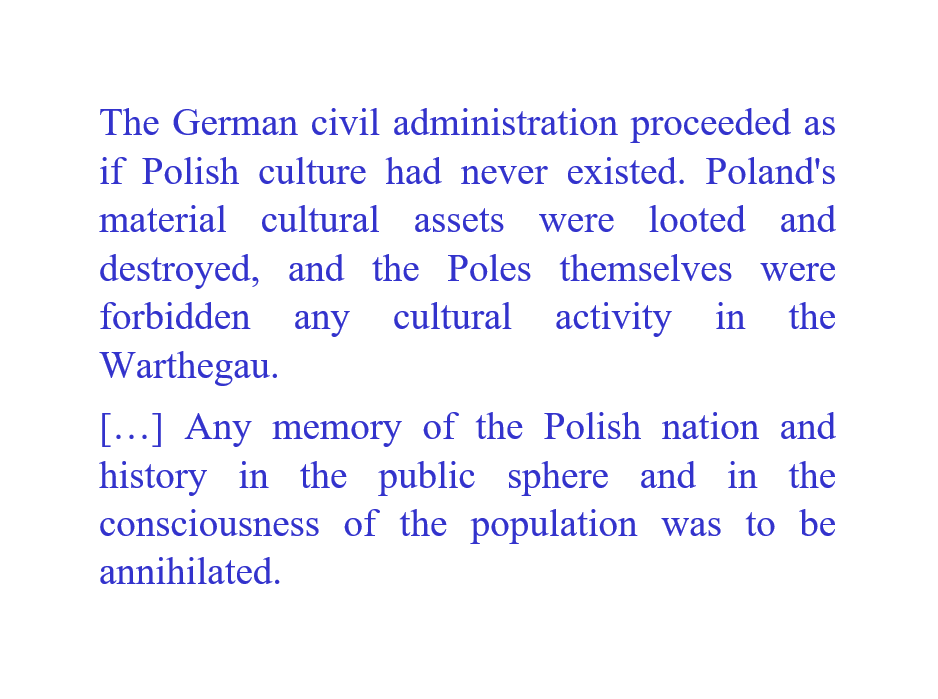The attempts to annihilate Polish culture
The German civil administration proceeded as if Polish culture had never existed. Poland’s material cultural assets were looted and destroyed, and the Poles themselves were forbidden any cultural activity in the Warthegau. The previously existing Polish education system was dismantled, and the Poles were excluded from acquiring education. The Nazi occupying power denied the “alien” [“fremdvölkischen“] Poles in the Reichsgau Wartheland any civic school and university education in order to prevent any future resistance against the German occupiers. The occupying power also denied the Poles participation in cultural life: by destroying Polish culture, by forbidding Poles to participate in the cultural life of the Germans, and by forbidding Poles to engage in self-determined cultural activity. The German occupying power enforced the underlying cultural hegemonic claim against the Poles by police means. Any memory of the Polish nation and history in the public sphere and in the consciousness of the population was to be annihilated. For this purpose, Polish monuments were demolished, Polish place and street names were exchanged for German ones, and so forth. The Poles in the Gau were to be educated into a mass of unresistant labor slaves, they were to be denationalized and de-culturalized. National Socialist cultural policy strove to turn them into a population group without intelligence and without national memory. Against the background of these goals, any cultural activity by Poles appeared to the National Socialist rulers in the Warthegau as acts of political resistance. […]
Miriam Y. Arani: Fotografische Selbst- und Fremdbilder von Deutschen und Polen im Reichsgau Wartheland: 1939–45; unter besonderer Berücksichtigung der Region Wielkopolska > Volume II. From Chapter IV: Polish Producers, Collectors and Distributors of Photographs between Adaptation, Self-Assertion and Resistance > photography in the Polish resistance in the Reichsgau Wartheland > culture and education, pp. 729-730.

